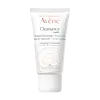What's inside
What's inside
 Key Ingredients
Key Ingredients

 Benefits
Benefits

 Concerns
Concerns

 Ingredients Side-by-side
Ingredients Side-by-side

Water
Skin ConditioningKaolin
AbrasiveCetearyl Alcohol
EmollientTriethylhexanoin
MaskingGlyceryl Stearate
EmollientGlycolic Acid
BufferingSodium Hydroxide
BufferingCeteareth-33
CleansingCellulose
AbsorbentCaprylic/Capric Glycerides
EmollientCI 77891
Cosmetic ColorantZinc Gluconate
Skin ConditioningBisabolol
MaskingCetrimonium Bromide
AntimicrobialParfum
MaskingGlyceryl Laurate
EmollientMicrocrystalline Cellulose
AbsorbentPyridoxine Hcl
Skin ConditioningSalicylic Acid
MaskingSodium Chloride
MaskingXanthan Gum
EmulsifyingWater, Kaolin, Cetearyl Alcohol, Triethylhexanoin, Glyceryl Stearate, Glycolic Acid, Sodium Hydroxide, Ceteareth-33, Cellulose, Caprylic/Capric Glycerides, CI 77891, Zinc Gluconate, Bisabolol, Cetrimonium Bromide, Parfum, Glyceryl Laurate, Microcrystalline Cellulose, Pyridoxine Hcl, Salicylic Acid, Sodium Chloride, Xanthan Gum
Water
Skin ConditioningKaolin
AbrasiveCaprylic/Capric Triglyceride
MaskingGlycerin
HumectantGlyceryl Stearate
EmollientClay
AbsorbentOryza Sativa Starch
AbsorbentPentylene Glycol
Skin ConditioningBehenyl Alcohol
EmollientPerlite
AbsorbentPalmitic Acid
EmollientStearic Acid
CleansingParfum
MaskingCaprylyl Glycol
EmollientIsopropyl Alcohol
SolventPEG-6
HumectantSilybum Marianum Fruit Extract
Skin ConditioningXanthan Gum
EmulsifyingIngredients Explained
These ingredients are found in both products.
Ingredients higher up in an ingredient list are typically present in a larger amount.
Glyceryl Stearate is a mix of glycerin and stearic acid.
It is used to stabilize the mixing of water and oil ingredients. By preventing these ingredients from separating, it can help elongate shelf life. It can also help thicken the product's texture.
As an emollient, it helps soften skin and supports barrier-replenishing ingredients.
In cosmetics, Glyceryl Stearate is often made from vegetable oils or synthetically produced.
This ingredient may not be fungal-acne safe
Fun fact: The human body also creates Glyceryl Stearate naturally.
Learn more about Glyceryl StearateKaolin is a clay. It is used for oil control and to help minimize pores. Like other clays, kaolin has the ability to absorb excess sebum or oil. This can help clean out pores and mattify the skin.
Some types of kaolin may have exfoliating properties. When water is added to kaolin, it becomes a paste with small abrasive particles.
Most kaolin is a white color, but may be pink/orange/red depending on where it comes from.
The name 'kaolin' comes from a Chinese village named 'Gaoling'. Kaolin clay comes from rocks rich in kaolinite. Kaolinite, the mineral, has a silicate layered structure. Kaolinite is formed from chemical weathering of aluminum siilicate minerals.
Besides skincare, kaolin is commonly used to make glossy paper, in ceramics, toothpaste, and as medicine to soothe stomach issues.
Learn more about KaolinParfum is a catch-all term for an ingredient or more that is used to give a scent to products.
Also called "fragrance", this ingredient can be a blend of hundreds of chemicals or plant oils. This means every product with "fragrance" or "parfum" in the ingredients list is a different mixture.
For instance, Habanolide is a proprietary trade name for a specific aroma chemical. When used as a fragrance ingredient in cosmetics, most aroma chemicals fall under the broad labeling category of “FRAGRANCE” or “PARFUM” according to EU and US regulations.
The term 'parfum' or 'fragrance' is not regulated in many countries. In many cases, it is up to the brand to define this term.
For instance, many brands choose to label themselves as "fragrance-free" because they are not using synthetic fragrances. However, their products may still contain ingredients such as essential oils that are considered a fragrance by INCI standards.
One example is Calendula flower extract. Calendula is an essential oil that still imparts a scent or 'fragrance'.
Depending on the blend, the ingredients in the mixture can cause allergies and sensitivities on the skin. Some ingredients that are known EU allergens include linalool and citronellol.
Parfum can also be used to mask or cover an unpleasant scent.
The bottom line is: not all fragrances/parfum/ingredients are created equally. If you are worried about fragrances, we recommend taking a closer look at an ingredient. And of course, we always recommend speaking with a professional.
Learn more about ParfumWater. It's the most common cosmetic ingredient of all. You'll usually see it at the top of ingredient lists, meaning that it makes up the largest part of the product.
So why is it so popular? Water most often acts as a solvent - this means that it helps dissolve other ingredients into the formulation.
You'll also recognize water as that liquid we all need to stay alive. If you see this, drink a glass of water. Stay hydrated!
Learn more about WaterXanthan gum is used as a stabilizer and thickener within cosmetic products. It helps give products a sticky, thick feeling - preventing them from being too runny.
On the technical side of things, xanthan gum is a polysaccharide - a combination consisting of multiple sugar molecules bonded together.
Xanthan gum is a pretty common and great ingredient. It is a natural, non-toxic, non-irritating ingredient that is also commonly used in food products.
Learn more about Xanthan Gum